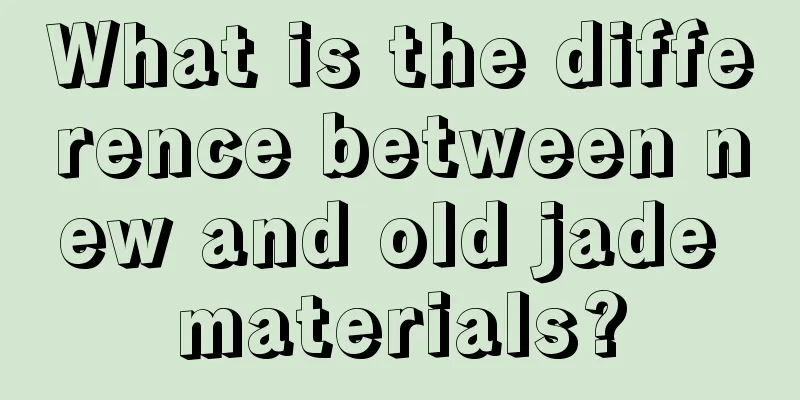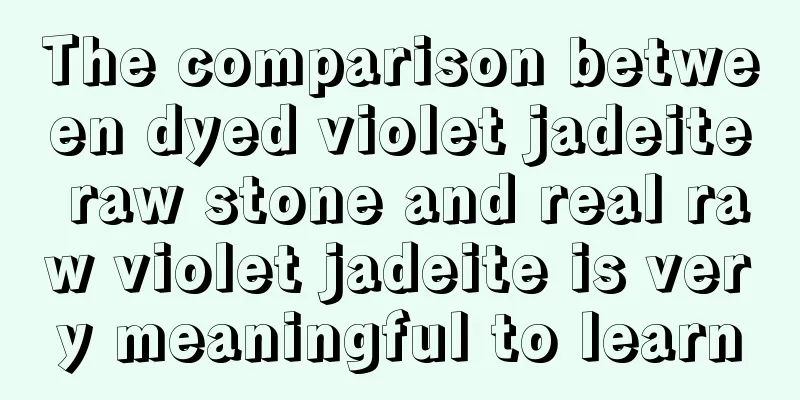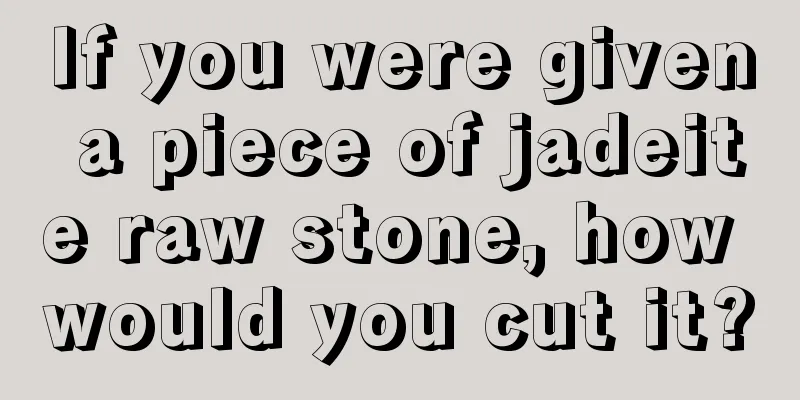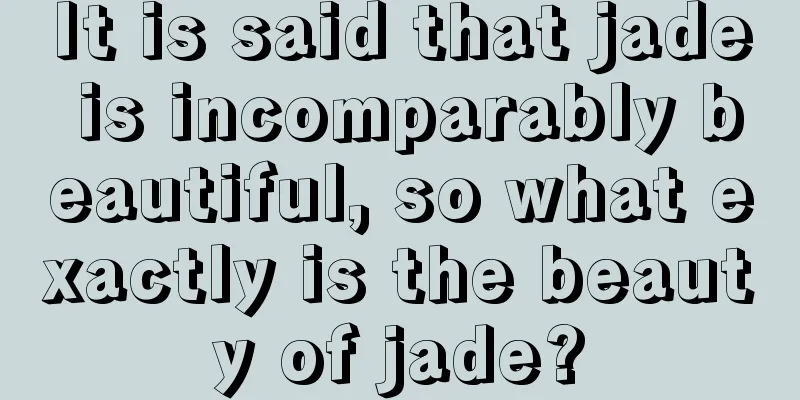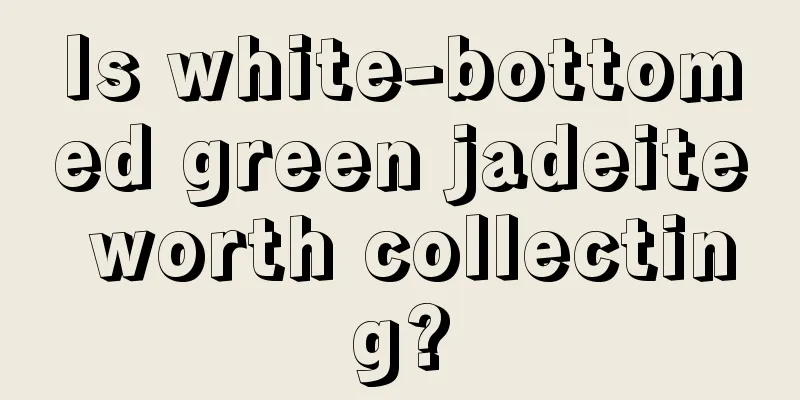The carving styles of jadeite are very informative
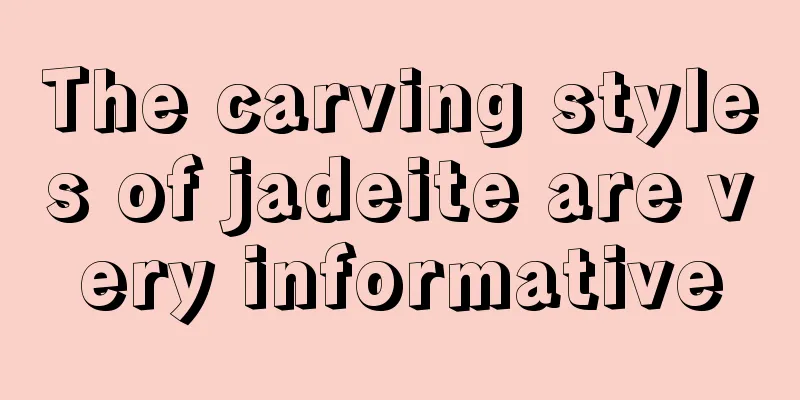
|
Everything is constantly developing in the process of change, and constantly changing in the process of development. Jadeite, the king of jade, is no exception. Of course, it is related to many natural and social factors, especially the environment, nationality, religion and times, which have a great influence on the formation and development of its characteristics. Xu Shen of the Han Dynasty said in "Shuowen Jiezi": "Jade is a beautiful stone with five virtues." The five virtues here are actually the five characteristics of jade summarized in ancient times, namely: jade's tough texture, crystal color, brilliant color, dense structure, and soothing sound. “A gentleman will never leave his jade without a reason”, “A gentleman compares his virtue to jade and a gentleman wears jade”, etc., all reflect the lofty status of jade in the hearts of the Chinese and even Oriental people. It can be said that the unique jade culture has become a microcosm of the profound traditional culture of the Chinese nation. As the saying goes: Clothes make the man. Then the jade needs to be "carved". The evolution of jade carving style is an important part of the history of jade culture development. Since modern times, the transformation of the carving style of jadeite, the king of jade, is a typical representative. Since the beginning of the new century, with the increasing cultural exchanges and cooperation between China and the West, the jade carving style has gradually shown stronger characteristics of the times on the basis of inheriting the traditional Chinese and Tian jade carving and polishing techniques. This not only injected fresh elements into the development of Chinese jade culture, but also enhanced the world's understanding of Eastern culture and promoted the integration of Chinese and Western cultural concepts. Traditional styles and patterns of jade carvings The themes of carvings on ancient jade products are often traditional Chinese auspicious patterns, as stated in "Annotations and Commentaries": "Auspicious means good fortune and good deeds; auspicious means a sign of Jiaqing." As the saying goes: "When a person has five blessings, flowers bloom in spring." The Five Blessings are the embodiment of auspiciousness. Happiness, wealth, longevity, joy and fortune are known as the Five Blessings among the people; the God of Fortune, the God of Wealth, the God of Longevity, the God of Joy and the God of Wealth are revered as the Five Gods of Fortune in the fairy world. The patterns used for carving on jadeite and other jade products include welcoming good fortune, happiness, longevity and good fortune, longevity of cranes, double happiness, and attracting wealth and treasure. In addition, totem worship is a common feature of all ancient ethnic cultures. In our country, the ancient dragon, phoenix, unicorn and other animals were gods worshipped by people, and their appearance was a blessing for mankind. Therefore, such carved patterns as Kuilong arching over a jade wall, phoenix feathers and auspicious clouds, dragon and phoenix bringing good luck, kylin spitting out books, and kylin and phoenix bringing good luck are widely used in jade carving. Religious activities have continued since the Tang Dynasty, so Buddhist content often appears in jade carvings, such as Bodhisattva's blessing, the Eight Auspicious Symbols, and the Two Immortals of Harmony and Unity. Therefore, due to the suppression of the ruling class and the confinement of people's thoughts at that time, jade mostly promoted the beauty of God. Traditional jade carvings have obvious royal and aristocratic tendencies. In the Qing Dynasty, when jade was very popular, it was only a darling of the royal family and dignitaries, because it could show their prominent status and wealth; for ordinary people, jade was an unattainable luxury and a "treasure of the nobility" that could only be admired from afar. Therefore, jade products themselves also carry abstract meanings and bear a profound imprint of class. It mostly describes things like promotion and getting rich, such as three ranks in life, being promoted to a higher position, and having five sons pass the imperial examinations. Modern styles and patterns of jade carvings With the development of the times, the modern style of jade carvings has retained a large number of traditional styles and themes, and has also incorporated many carving contents with Western cultural connotations. Jade carvings with these themes are gradually being accepted by consumers, especially young consumers, and are mainly in the form of small jade plaques or pendants. Western culture advocates truth and nature, and emphasizes individuality without losing rationality. Therefore, the design style of modern jade carving patterns often becomes bold and relaxed while inheriting the rules of modeling. The theme can not only be based on Western culture and religion, but also ordinary characters can be the main line, aiming to praise the truth, goodness and beauty in the world.
|
<<: Ingenious Design in Jade Carving
>>: Why are jade bracelets considered amulets for women?
Recommend
Jadeite flakes, skillfully carved into finished products, the artistic conception is so beautiful
Today I would like to share with you two pieces o...
What is an ice jade bracelet and what are its main styles?
The outer layer of ice jade is crystal clear, as ...
Which mines are the most worthy of investment in jadeite rough stones now? Gambling stone experts tell you
When gambling on stones, everyone wants to buy th...
Snowflake cotton, the ice and snow world in jade
The sea and sky are one color, with snowflakes do...
The man bought jadeite raw stone without listening to advice, and unexpectedly cut out a rare icy type of "Spring Color" jadeite! What a surprise!
Gambling on jade has always been a hot topic in t...
Choose jade, look at these points
In the jade industry, loose stone refers to jade ...
Jade carving is also an art
Generally speaking, perfect jade carving is refle...
How many commonly used jade identification tools do you know?
In the jade market where good and bad jades coexi...
How to choose jade ruyi? 3 details to pay attention to
1. The quality of the jade is very important. It ...
How do you judge whether a piece of jade is of high quality?
Jade is a decorative item with rich themes and va...
Different jade ornaments represent different meanings
Nowadays, many people prefer small jade jewelry w...
Why does jade have such a high investment value?
Chinese people like jade. In the past, people car...
Alternative identification method of jadeite: judging the authenticity of jadeite by looking at its color with the naked eye
There are many different ways to identify the aut...
Do you know how to identify jade?
Do you know how to identify jadeite? To identify ...
Let you know what is antique jade
The birth of every kind of art is the crystalliza...
